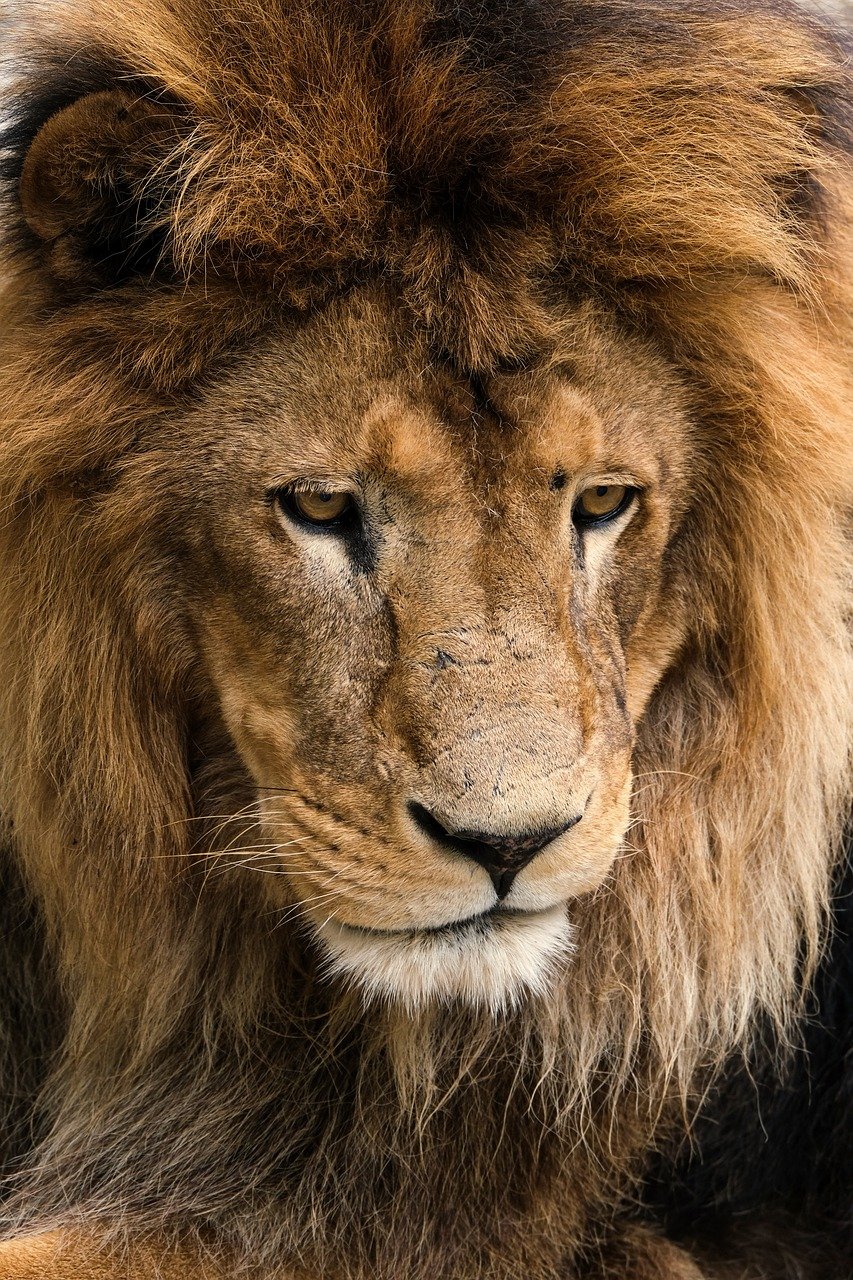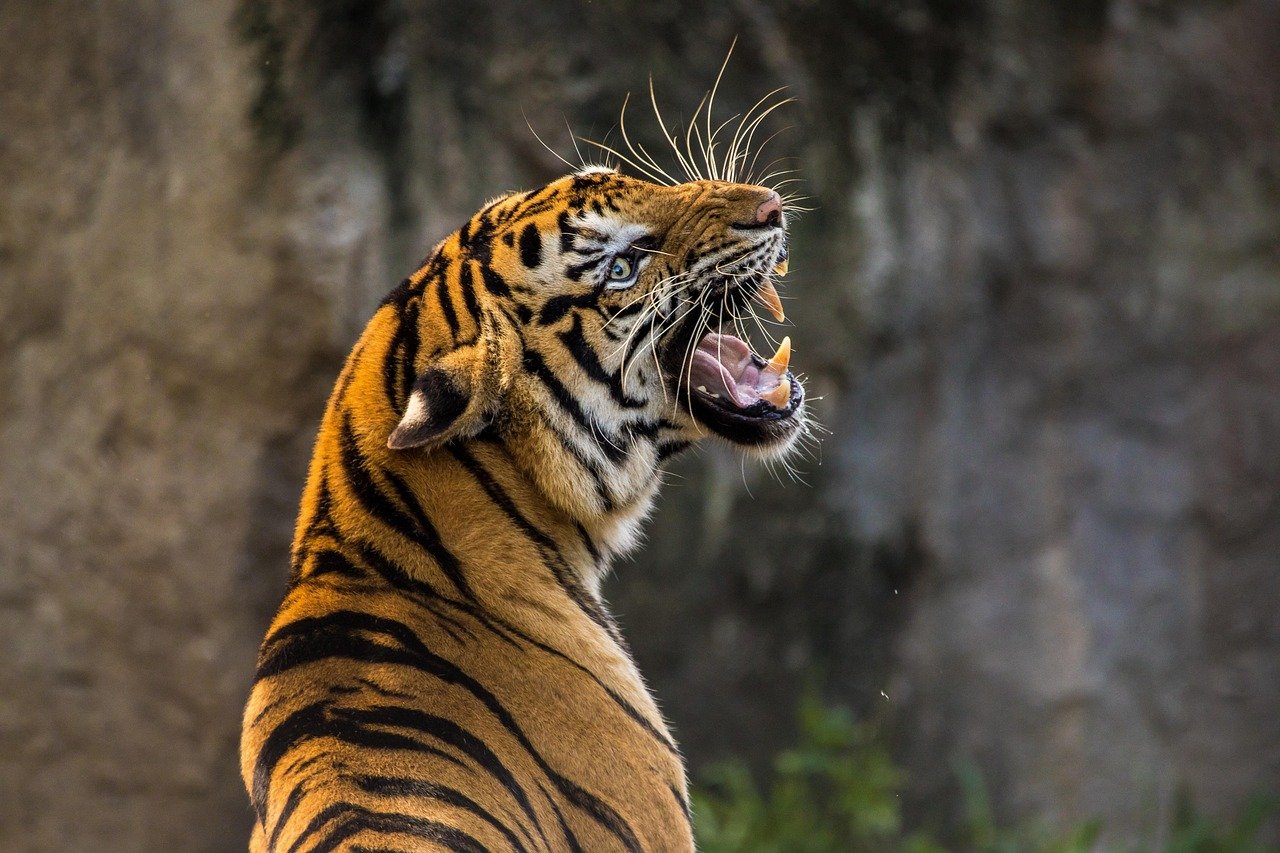Saber-Toothed Cat (Smilodon fatalis)

Picture this: a cat with fangs so massive they could pierce through thick hide like butter knives through cake. The Saber-Toothed Cat wasn’t just another big kitty – it was nature’s ultimate stabbing machine. These incredible predators roamed North and South America around 2.5 million years ago, making them older than your great-great-great (add about 100,000 more greats) grandmother.
What made these cats truly terrifying wasn’t their size, but their hunting strategy. Unlike modern big cats that strangle their prey, Saber-Toothed Cats delivered precise, devastating bites to major blood vessels. Their muscular build was more like a linebacker than a sprinter, built for power rather than speed.
Cave Lion (Panthera spelaea)

The Cave Lion was essentially a supersized version of today’s African lion, but with an attitude problem and no fear of the cold. These massive cats dominated Europe and Asia during the Ice Age, making themselves at home in some pretty chilly neighborhoods. They were about 25% larger than modern lions and had a reputation for being absolute units in the prehistoric world.
What’s fascinating is that early humans actually lived alongside these beasts and painted them on cave walls. Imagine trying to explain to your caveman neighbors why you decided to decorate your living room with portraits of the neighborhood’s most dangerous resident. These cats went extinct around 14,000 years ago, well before mammoths said their final goodbye.
American Cheetah (Miracinonyx trumani)

North America once had its own version of the cheetah, and it was arguably even more impressive than its African cousin. The American Cheetah could reach speeds of up to 70 mph, making it one of the fastest land animals that ever lived. These speed demons evolved to chase down pronghorn antelope across the vast plains of prehistoric North America.
Here’s the kicker: pronghorn antelopes today can still run incredibly fast because they evolved to outrun these extinct cats. It’s like nature’s ultimate game of tag that lasted millions of years. The American Cheetah disappeared around 12,000 years ago, leaving pronghorns with superhuman speed and no one left to chase them.
Scimitar Cat (Homotherium serum)

Meet the Scimitar Cat, the prehistoric feline that looked like someone crossed a lion with a hyena and gave it serious dental issues. These cats had curved saber teeth that were shorter than their famous Smilodon cousins but probably more effective for slicing through flesh. They were the ultimate pack hunters of the Ice Age, working together like a well-oiled killing machine.
What made Scimitar Cats particularly nasty was their ability to climb trees and hunt in coordinated groups. Imagine trying to escape a pride of these things – there was literally nowhere to hide. They vanished around 28,000 years ago, making them ancient even by mammoth standards.
Giant Jaguar (Panthera onca augusta)

The Giant Jaguar was basically today’s jaguar after hitting the gym for a few million years and taking some serious growth hormones. These massive cats were 15-20% larger than modern jaguars and had bite forces that could crush turtle shells like potato chips. They ruled the Americas during the Pleistocene epoch with an iron paw.
What’s incredible is that these cats were probably the apex predators of their time, taking down prey that would make modern jaguars think twice. They had the jaw strength to bite through practically anything, making them the ultimate can openers of the prehistoric world. Their extinction around 11,000 years ago left a massive gap in the ecosystem.
European Jaguar (Panthera onca gombaszoegensis)

Europe once had its own jaguar species, and it was a force to be reckoned with during the early Pleistocene. The European Jaguar was perfectly adapted to the forested environments of ancient Europe, stalking through dense woodlands like a spotted shadow. These cats were skilled ambush predators who could take down prey much larger than themselves.
The really wild part is imagining jaguars prowling through what would eventually become Paris or London. These cats went extinct around 1.5 million years ago, long before humans ever set foot in Europe. Climate change and competition from other predators eventually pushed them out of their European paradise.
Machairodus (Machairodus giganteus)

Machairodus was like the grandfather of all saber-toothed cats, setting the standard for massive fangs and impressive killing power. These cats lived across Europe, Asia, and Africa during the Miocene and Pliocene epochs, making them true world travelers of the prehistoric era. They were built like tanks with legs and had teeth that could puncture almost anything.
What made Machairodus particularly formidable was its size – some species reached the size of small lions but packed way more cutting power. They were the pioneers of the saber-tooth lifestyle, perfecting the art of precision killing millions of years before Smilodon became famous. Their legacy lived on through their descendants, but the original models went extinct around 2 million years ago.
Dinofelis (Dinofelis piveteaui)

Dinofelis earned the nickname “false saber-tooth” because it looked dangerous but wasn’t quite as extreme as its more famous cousins. These cats were perfectly sized for hunting medium-sized prey and had a build that was somewhere between a leopard and a small lion. They were incredibly successful hunters who dominated Africa and parts of Asia for millions of years.
The fascinating thing about Dinofelis is that they likely hunted early human ancestors, making them a significant threat to our evolutionary story. Fossil evidence suggests these cats were specifically adapted to hunt primates, which is both terrifying and oddly personal. They disappeared around 1.2 million years ago, giving our ancestors one less thing to worry about.
Xenosmilus (Xenosmilus hodsonae)

Xenosmilus was the oddball of the saber-tooth family, with teeth that were more like serrated knives than traditional fangs. These cats had a unique hunting style that involved using their specialized teeth to slice through flesh rather than delivering single devastating bites. They were relatively small compared to other saber-toothed cats but made up for it with precision and efficiency.
What’s particularly cool about Xenosmilus is that they represent a different evolutionary approach to being a saber-toothed predator. Instead of going bigger and stronger, they went smaller and more specialized. They lived in North America during the Pleistocene but went extinct around 1.8 million years ago, proving that sometimes being different isn’t enough to survive.
Megantereon (Megantereon cultridens)

Megantereon was like the Swiss Army knife of prehistoric cats, perfectly balanced between size, speed, and killing power. These cats had moderately sized saber teeth and a build that allowed them to hunt a wide variety of prey across multiple continents. They were the ultimate generalists in a world full of specialists.
What made Megantereon particularly successful was their adaptability – they could hunt everything from small antelopes to larger prey depending on what was available. They spread across Africa, Europe, and Asia, proving that sometimes being a jack-of-all-trades is better than being a master of one. Their extinction around 500,000 years ago marked the end of an incredibly successful evolutionary experiment.
Paramachairodus (Paramachairodus orientalis)

Paramachairodus was one of the earlier saber-toothed cats, helping to establish the template that would make this group so successful. These cats lived during the Miocene epoch and were among the first to develop the distinctive saber-tooth hunting style. They were pioneers in the truest sense, experimenting with new ways to be deadly predators.
The remarkable thing about Paramachairodus is how they influenced the evolution of all subsequent saber-toothed cats. They figured out the basic formula for success and passed it down through millions of years of evolution. They went extinct around 9 million years ago, but their legacy lived on through their more famous descendants.
Barbourofelis (Barbourofelis fricki)

Barbourofelis wasn’t technically a true cat, but it deserves a spot on this list because it was one of the most successful saber-toothed predators of the Miocene. These animals were built like prehistoric killing machines, with massive saber teeth and powerful bodies designed for taking down large prey. They were essentially nature’s answer to the question “what if we made something even scarier than a saber-toothed cat?”
What’s fascinating about Barbourofelis is how they convergently evolved similar features to true saber-toothed cats, proving that the saber-tooth design was just that effective. They dominated North American ecosystems for millions of years before going extinct around 9 million years ago. Their disappearance helped make room for the true cats that would later rule the prehistoric world.
Conclusion

These magnificent prehistoric cats ruled the ancient world with a combination of power, precision, and predatory instinct that modern felines can only dream of. From the massive fangs of Smilodon to the lightning speed of the American Cheetah, each species represented a unique solution to the age-old problem of survival. Their extinction reminds us that even the most perfectly adapted predators can disappear when faced with changing environments and competition.
What’s most amazing is that these incredible cats all vanished before the woolly mammoth, making them truly ancient members of the feline family tree. Their legacy lives on in the cats we know and love today, but imagine how different our world would be if any of these prehistoric predators had survived. Which of these amazing ancient cats would you have been most curious to observe from a very safe distance?
Hi, I’m Bola, a passionate writer and creative strategist with a knack for crafting compelling content that educates, inspires, and connects. Over the years, I’ve honed my skills across various writing fields, including content creation, copywriting, online course development, and video scriptwriting.
When I’m not at my desk, you’ll find me exploring new ideas, reading books, or brainstorming creative ways to solve challenges. I believe that words have the power to transform, and I’m here to help you leverage that power for success.
Thanks for stopping by, Keep coming to this website to checkout new articles form me. You’d always love it!






